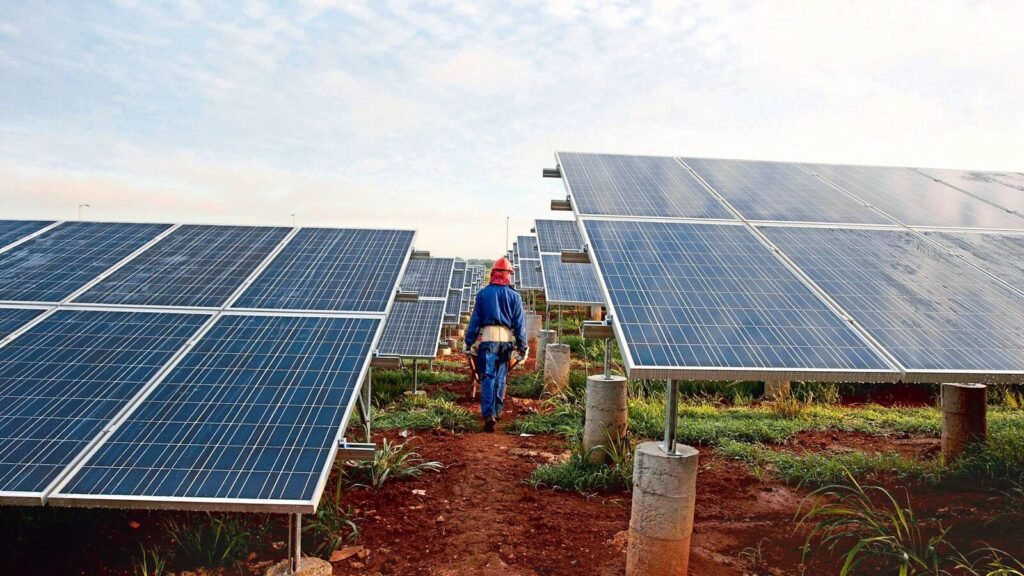The energy firm in sights of a global consortium

The deal involves the sale of private equity firm TPG Capital’s 52% stake in the company, and a fresh equity investment of around $500 million, in a transaction run by Bank of America and Investec.
“The deal is expected to be announced shortly, with the valuation likely to be at a nominal premium to the post-money valuation of the last fundraise from Norfund,” said one of the two people cited, above requesting anonymity.
Last year, Norway’s state-owned investment fund Norfund invested 350 crore in the Hyderabad-based company which caters to the commercial and industrial (C&I) segment, after investing $100 million in June 2021.
A Fourth Partner Energy spokesperson in an emailed response said, “As you are aware, FPEL is currently in the closing stages of this round of fundraising. However, as per company policy, we will not be able to comment on any particular developments with respect to the fund-raising at this stage.”
Spokespersons for ADB, TPG, Bank of America, Investec and Norfund declined to comment. Queries emailed to the spokespersons of IFC and AIIB on Tuesday remained unanswered till press time.
The transaction has been in the works for some time now, and earlier saw interest from Brookfield Asset Management Inc., I Squared Capital, Hinduja Renewables Energy Pvt. Ltd, Canada’s Alberta Investment Management Corp., and Ontario Municipal Employees Retirement System (OMERS), as reported by Mint.
Fourth Partner Energy, which counts TPG Capital’s RISE Fund and Norway’s Norfund as investors, has a current installed green energy capacity of 1.35 gigawatt (GW), with operations in Vietnam, Bangladesh, Sri Lanka and Indonesia; and plans to reach an installed capacity of 3.5GW by 2025. It was founded in 2010 as a solar component and engineering, procurement and construction (EPC) firm.
India’s C&I segment has attracted strong investor interest, with a number of deals in the works given the regulatory landscape being supportive of the space with rules allowing large power users to source energy from the open market rather than the costlier grid. C&I projects are also shielded from risks such as power procurement curtailment by state-run power distribution firms. Also, State Electricity Regulatory Commissions (SERCs) implementation of Time of Day (ToD) tariff for large C&I category consumers has helped sustain the investor’s interest.
The latest case in point was former US vice-president Al Gore-headed Generation Investment Management’s Just Climate LLP, and Singapore’s CapitaLand Investment Ltd, besides other entities, exploring an acquisition of Radiance Renewables Pvt. Ltd in a deal having a potential equity value of about $300 million. Also, INOXGFL Group plans to sell a majority stake in its C&I business and has mandated EY with running the sale process for the deal, which has a potential equity value of around $200 million. In addition, Serentica Renewables, promoted by Sterlite Power, is planning to sell a minority stake to raise around $300 million and to appoint a sell-side banker to run the process.
There also other large deals in play including Actis Llp’s BluPine Energy, Singapore’s Sembcorp Industries Ltd, Edelweiss Infrastructure Yield Plus Fund’s Sekura Energy, Torrent Power and JSW Group exploring to buy Brookfield Renewable’s 1.6 gigawatt (GW) portfolio in India, with the deal expected to have an equity value of around $800 million. JP Morgan is running the sale process for the 1.6 GW capacity, of which 1 GW is operational, while the balance 600 MW is under execution.
The investment thesis is also guided by the scale that India’s green energy space offers. The government’s playbook is to add 50 GW of green energy capacity annually to reach 500 GW renewable capacity by 2030. India currently has an installed renewable energy capacity of 180.79 GW, which includes 73.31 GW solar and 44.73 GW of wind power capacity. This large capacity addition requirement, in turn, is attracting investors, with the country getting $6.13 billion foreign direct investment in the renewable energy sector from April 2020 till September 2023, according to the Department for Promotion of Industry and Internal Trade (DPIIT).
“Commercial and industrial tariffs benefit from annual inflation adjustments which help offset resource risk to an extent,” said S&P Global Ratings in a 7 March report.
“In addition to tenders awarded in 9M FY2024, there are about 16 GW tenders under way by the central nodal agencies. Further, the bidding agencies are putting greater focus on tenders for firm supply, i.e., Round the Clock (RTC), to mitigate the intermittency risk associated with renewables. Considering the oversizing required for these projects, the capacity set up under RTC tenders is estimated to be 3-4 times of the auctioned capacity,” ICRA said in a 23 February report.
